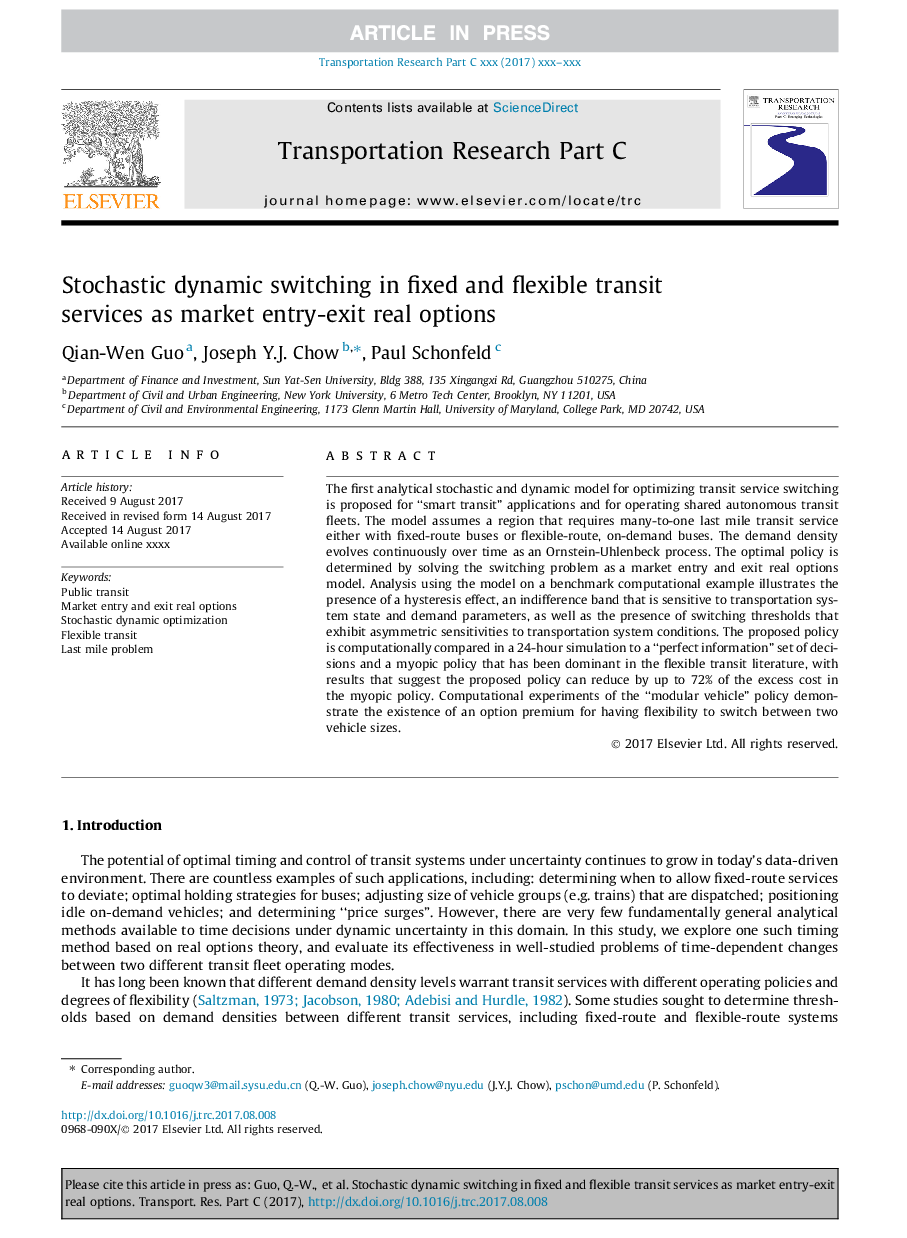| Article ID | Journal | Published Year | Pages | File Type |
|---|---|---|---|---|
| 8947483 | Transportation Research Part C: Emerging Technologies | 2018 | 19 Pages |
Abstract
The first analytical stochastic and dynamic model for optimizing transit service switching is proposed for “smart transit” applications and for operating shared autonomous transit fleets. The model assumes a region that requires many-to-one last mile transit service either with fixed-route buses or flexible-route, on-demand buses. The demand density evolves continuously over time as an Ornstein-Uhlenbeck process. The optimal policy is determined by solving the switching problem as a market entry and exit real options model. Analysis using the model on a benchmark computational example illustrates the presence of a hysteresis effect, an indifference band that is sensitive to transportation system state and demand parameters, as well as the presence of switching thresholds that exhibit asymmetric sensitivities to transportation system conditions. The proposed policy is computationally compared in a 24-hour simulation to a “perfect information” set of decisions and a myopic policy that has been dominant in the flexible transit literature, with results that suggest the proposed policy can reduce by up to 72% of the excess cost in the myopic policy. Computational experiments of the “modular vehicle” policy demonstrate the existence of an option premium for having flexibility to switch between two vehicle sizes.
Related Topics
Physical Sciences and Engineering
Computer Science
Computer Science Applications
Authors
Qian-Wen Guo, Joseph Y.J. Chow, Paul Schonfeld,
